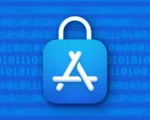Apple’s PQ3 Protocol: Quantum-Resistant Encryption for Uncompromising Security
Apple’s latest move to fortify iMessage with the PQ3 protocol underscores the company’s unwavering commitment to user privacy and security in the face of evolving threats. With the emergence of quantum computing, traditional cryptographic methods face unprecedented challenges, as these powerful machines possess the potential to unravel conventional encryption algorithms with ease. By integrating the PQ3 protocol into iMessage, Apple is proactively future-proofing its messaging platform against the looming threat posed by quantum computers, ensuring that user data remains safeguarded even in the event of a quantum computing breakthrough.
The introduction of the PQ3 protocol marks a significant milestone in the realm of secure messaging, positioning iMessage alongside other leading platforms like Signal in adopting quantum-resistant cryptography. This strategic initiative not only bolsters the security posture of iMessage but also reflects Apple’s dedication to staying ahead of the curve in addressing emerging cybersecurity threats. By prioritizing the implementation of state-of-the-art encryption technologies, Apple aims to instill confidence in its user base, assuring them that their communications remain protected against highly sophisticated attacks both now and in the future.
In the landscape of secure messaging services, the adoption of quantum-resistant cryptography represents a pivotal step towards enhancing the resilience of encryption protocols. While traditional public key cryptography has long been the cornerstone of secure communication, the advent of quantum computing necessitates a paradigm shift in cryptographic approaches. Apple’s proactive stance in deploying the PQ3 protocol underscores its commitment to staying at the forefront of cybersecurity innovation, setting a new standard for privacy and security in the digital age.
Apple also highlights another challenge posed by quantum computers — the “Harvest Now, Decrypt Later” scenario. By storing vast amounts of encrypted data available today, capable attackers can gain access to the data at some point in the future once a powerful enough quantum computer is capable of breaking the traditional encryption used to protect those messages.

The new PQ3 post-quantum encryption protocol is designed to protect users from existing and future adversaries and will be introduced from the start of a chat, according to Apple. It would need to be combined with the company’s existing encryption, with a hybrid design that means attackers would need to defeat both the traditional encryption and the post-quantum primitives used to protect iMessage conversations.
In order to protect users in case an encryption key is compromised, Apple says that a new post-quantum key is transmitted periodically (instead of with every message), to keep the size of these encrypted messages in check, while allowing users to access the service even in poor network conditions.
The new PQ3 protocol has been reviewed by the company’s Security Engineering and Architecture (SEAR) teams. It has also been reviewed by a team led by Professor David Basin, head of the Information Security Group at ETH Zürich, as well as Professor Douglas Stebila from the University of Waterloo. The company also says that it also contracted a third-party security consultancy independently assessed the PQ3 source code, and found no security issues, according to the company.

















